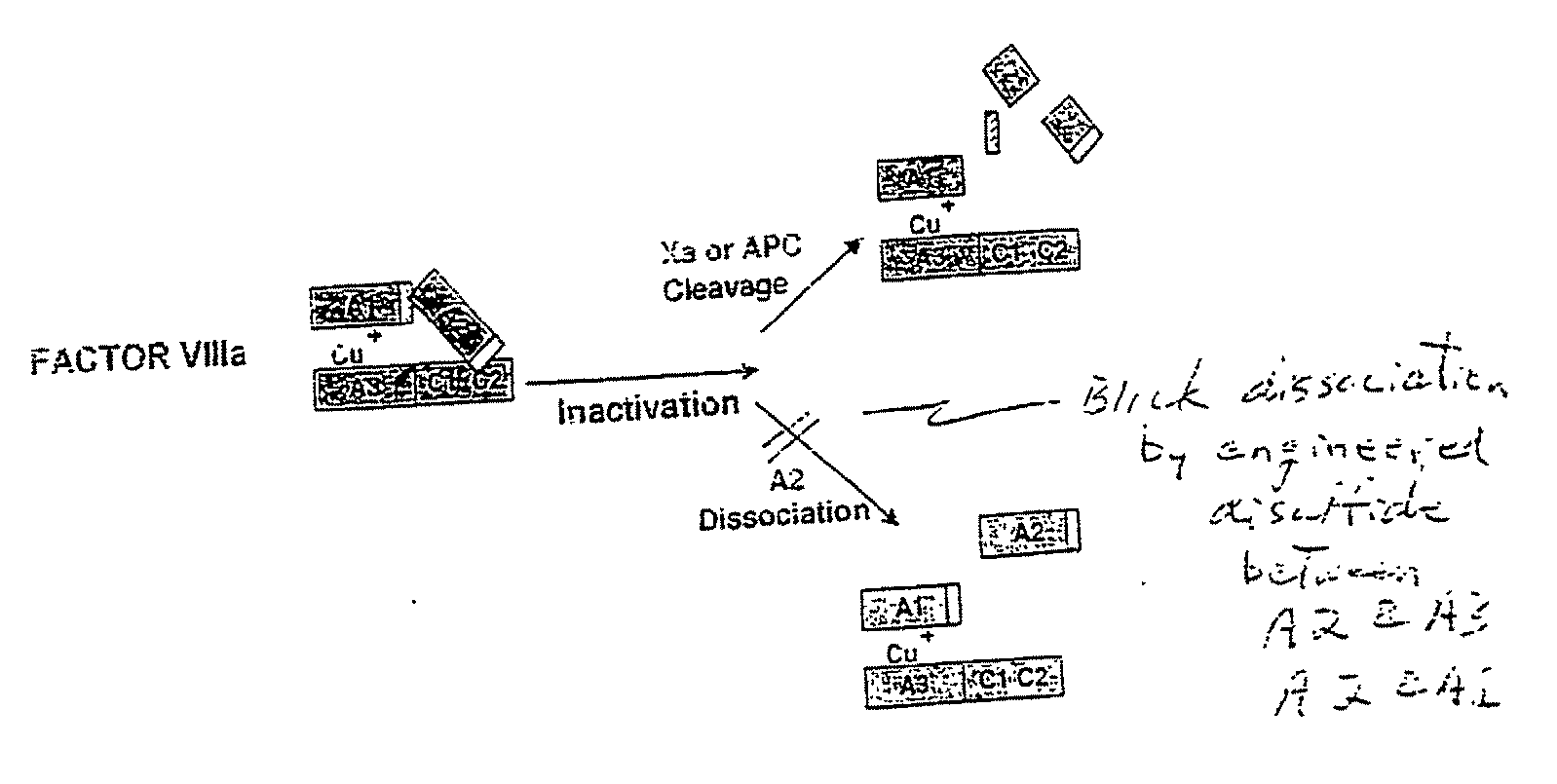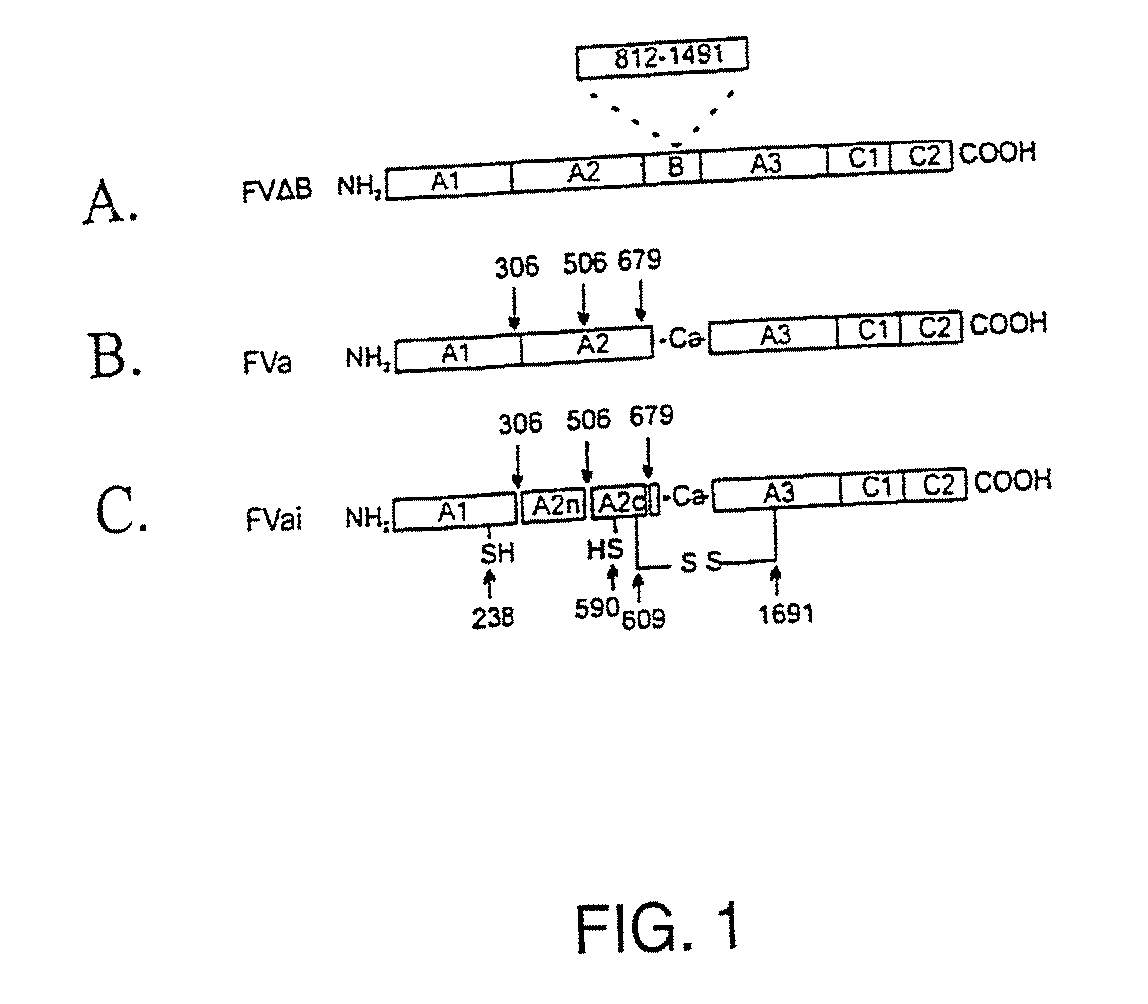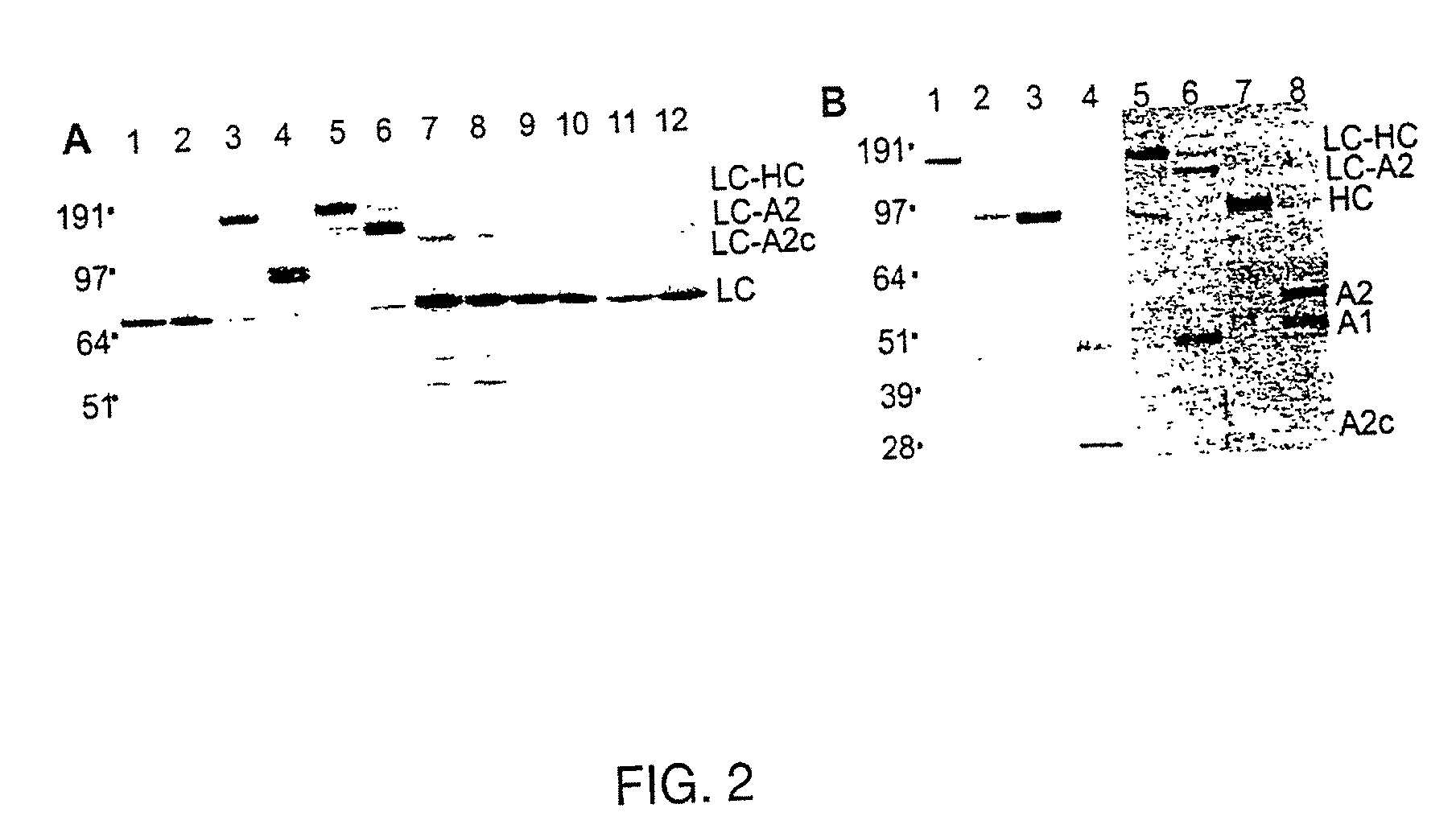Stabilized Proteins with Engineered Disulfide Bonds
a technology of engineered disulfide and protein, applied in the field of stabilized proteins with engineered disulfide bonds, can solve the problems of unavailability of factor viii concentrate supplies, range of serious symptoms, and separation of domains, and achieve the effect of prolonging the retention of desired activities and avoiding undesired activities
- Summary
- Abstract
- Description
- Claims
- Application Information
AI Technical Summary
Benefits of technology
Problems solved by technology
Method used
Image
Examples
example 1
[0094] In one embodiment of the present invention, one may engineer into recombinant FV mutants a disulfide bond between the A2 and the A1 or A3 domains such that dissociation of the A2 domain is prevented. Neither the x-ray crystal structure nor NMR structure of FVa is known. However, as noted above, the present invention is not limited to use with such structures and may be applied to homology models.
[0095] Accordingly, the computer program MODIP (19), which employs the algorithm of Sowdhamini, was applied to the Pellequer homology model of FVa (20). As noted above, MODIP predicts sites for the introduction of disulfide bridges and provides grades (A, B, C) for each prediction. Grade A sites are those predicted to be most optimal for the establishment of disulfide bridges, while grade B and grade C sites are progressively less ideal.
[0096] For the Pellequer FVa model, no grade A sites were predicted at either the A1-A2 or A2-A3 interfaces, a single grade B site was pred...
example 2
Factor VIII
[0118] As is known in the art, there are a number of similarities between Factor V and Factor VIII. More specifically, Factors V and VIII have similar gene structures, have highly homologous amino acid sequences and domain structures, are both activated by highly specific cleavages by thrombin, and both are inactivated by limited proteolysis by activated protein C (APC). Accordingly, one may engineer into recombinant FVIII disulfide bonds between the A2 and the A1 or A3 domains using a method similar to that disclosed above concerning FV. As is known in the art, FVIIIa is thermodynamically unstable because the A2 domain can spontaneously disassociate. As shown in FIG. 3, placement of a disulfide bond between the A2 and the A1 or A3 domains of FVIIIa has the advantage of preventing this dissociation.
[0119] Like FVa, neither the x-ray crystal nor NMR structure of FVIIIa is known. However, as noted above, the present invention is not limited to use such structures and may ...
example 3
Porcine-Human Hybrid Factor VIII
[0134] There exists in the art hybrid factor VIII molecules whose amino acid sequence derives from both human and non-human-animal (“non-human”) factor VIII coding sequences. Examples of such molecules may be found, for example in U.S. Pat. No. 6,180,371, incorporated herein by reference. According to the present invention, non-human / human hybrid factor VIII containing a disulfide bond between the hybrid's A2 and A1 or A3 domains may be created. Like the above example, such a disulfide bond prevents dissociation of the A2 domain.
[0135] The creation of such hybrid molecules is largely analogous to the procedure described above for non-hybrid FVIII. Firstly, a homology model of hybrid FVIIIa, for example, one comprised of a non-human A2 domain and a heterodimer of des-A2 human factor VIIIa, may be obtained or created. Alternately, an x-ray crystal structure may be obtained or created if such a structure exists or is capable of being created. The MODIP...
PUM
| Property | Measurement | Unit |
|---|---|---|
| pH | aaaaa | aaaaa |
| volume | aaaaa | aaaaa |
| volume | aaaaa | aaaaa |
Abstract
Description
Claims
Application Information
 Login to View More
Login to View More - R&D
- Intellectual Property
- Life Sciences
- Materials
- Tech Scout
- Unparalleled Data Quality
- Higher Quality Content
- 60% Fewer Hallucinations
Browse by: Latest US Patents, China's latest patents, Technical Efficacy Thesaurus, Application Domain, Technology Topic, Popular Technical Reports.
© 2025 PatSnap. All rights reserved.Legal|Privacy policy|Modern Slavery Act Transparency Statement|Sitemap|About US| Contact US: help@patsnap.com



